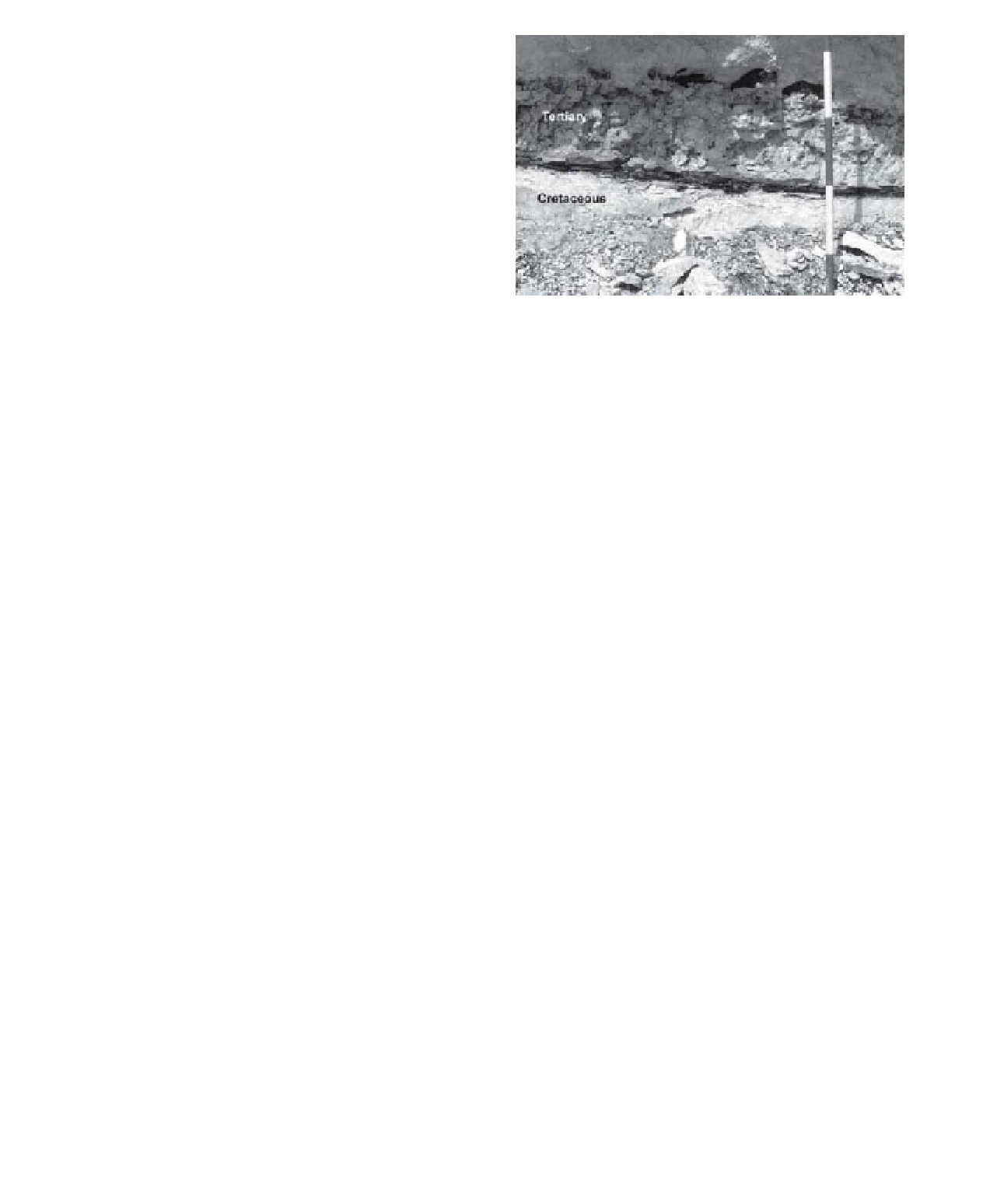Geoscience Reference
In-Depth Information
A
B
Figure 9-4.
Stratotype for the boundary between the Cretaceous (K) and Tertiary (T) systems; Stevns Klint, south of
Copenhagen, Denmark. A. Cliff proi le displays uppermost Cretaceous chalk in the lower portion and lowermost
Tertiary limestone above. Note people on beach for scale. B. Close-up view of the K/T boundary, which is marked here
by a thin dark seam known as the i sh clay (Håkanson 1971). Scale pole marked in 20-cm intervals. Photos by J.S. Aber.
in particular. Angiosperms (l owering plants)
appeared during the early Cretaceous (
c
. 145 to
100 million years ago), including many now-
common hydrophytes such as waterlilies
(Nymphaeaceae) and lotus (Nelumbonaceae).
Likewise, salt-tolerant mangroves related to
extant species appeared during the Cretaceous,
as did sea grasses. Nonetheless, forested mires
continued to be dominated by conifers with an
understory of ferns; mosses and ferns were
important in some raised mires (Greb, DiMichele
and Gastaldo 2006). Cretaceous coal is found in
many places around the world: western North
America (see Fig. 2-9), Central America and
northwestern South America, eastern and central
Asia, and New Zealand. This was the acme of
dinosaur development, and their fossils are com-
monly found in coal and other wetland strata
along with aquatic and l ying reptiles, aquatic
birds, and other creatures. Blood-sucking insects
(black l ies and mosquitos) made their i rst
appearance in late Cretaceous amber (see
below).
The Cretaceous culminated with another
massive extinction that affected all categories of
life
-
micro and macro, plant and animal, marine
and terrestrial. The cause of this extinction is
widely attributed to an asteroid or comet impact,
which spread a distinctive iridium-rich so-called
boundary layer in sedimentary deposits around
the world (Fig. 9-4). However, other tectonic and
climatic events may have contributed to this
extinction. In any case, among those plants and
animals that survived, many were obligate
wetland inhabitants, which suggest that wet-
lands may have served as refugia during the
extinction event (Greb, DiMichele and Gastaldo
2006).
Following the end-Cretaceous extinction,
global changes in l ora and fauna took place
early in the Tertiary; mammals and angiosperms
quickly rose to dominance in most parts of the
world, and widespread mires developed. Terti-
ary coal deposits are found in many regions,
particularly western North America, western
South America, central Europe (see Fig. 8-24A),
and southeastern Asia (Greb, DiMichele and
Gastaldo 2006). In general, Tertiary peat expe-
rienced less burial and chemical conversion
compared with older coals. Tertiary coal, thus,
usually has lower carbon content and is more
properly called brown coal or lignite. Tertiary
brown coal is up to 90 m thick in some basins,
which suggests multiple or stacked mire accu-
mulations (Fig. 9-5).
The breakup of Pangaea, which had begun
during the Mesozoic, reached its apex with
several completely separate or semi-isolated
continents during the middle Cenozoic. This led
to increasing climatic zonation and high biodi-
versity, especially for angiosperms, such that
wetland habitats and resulting coal deposits






